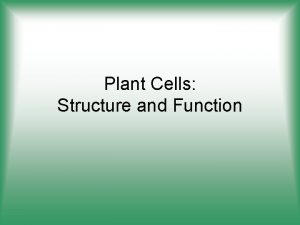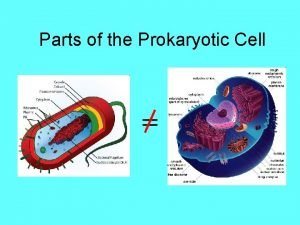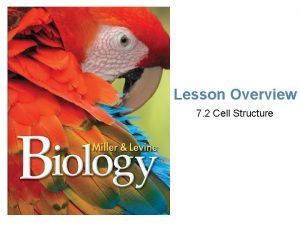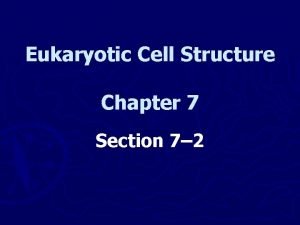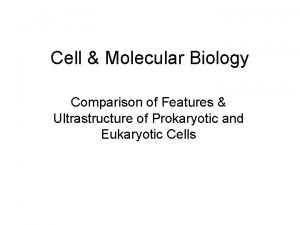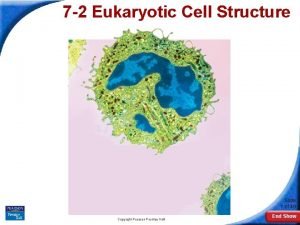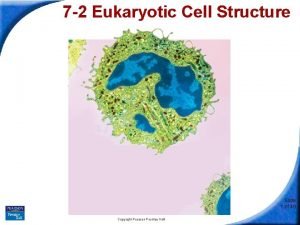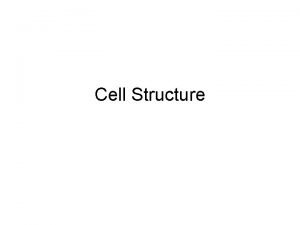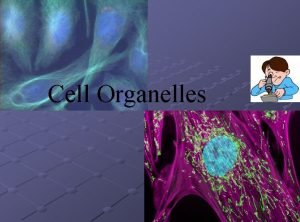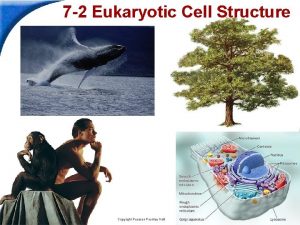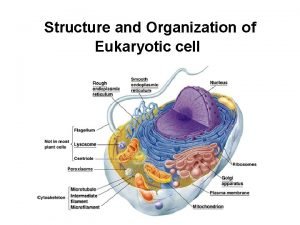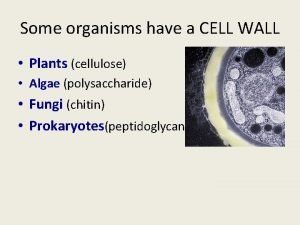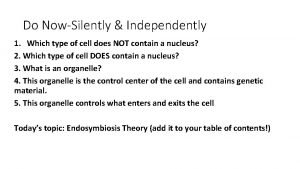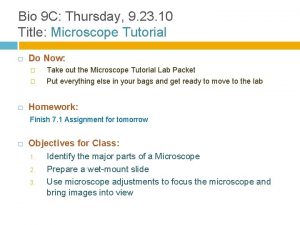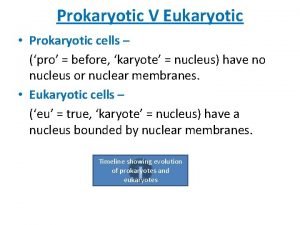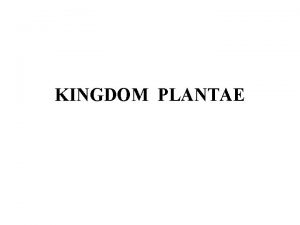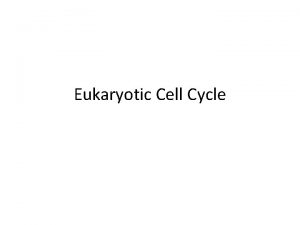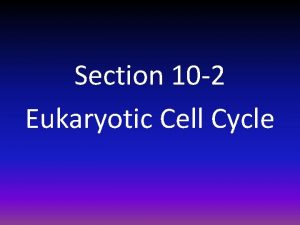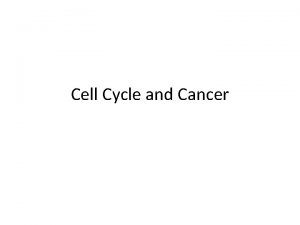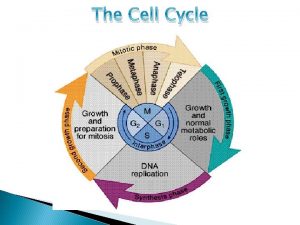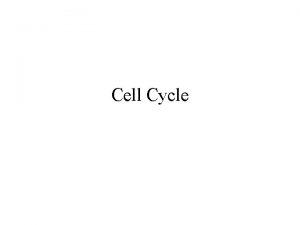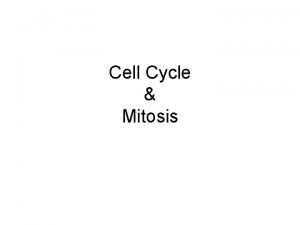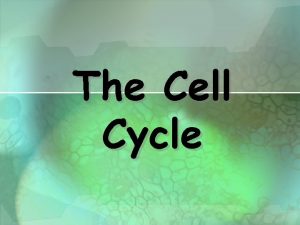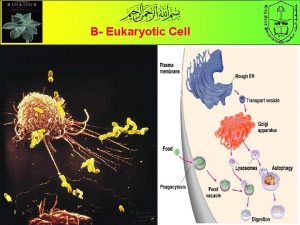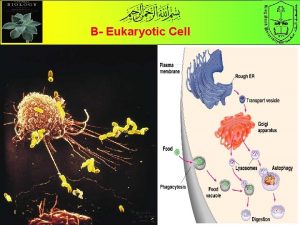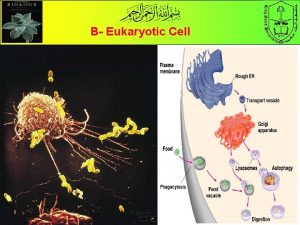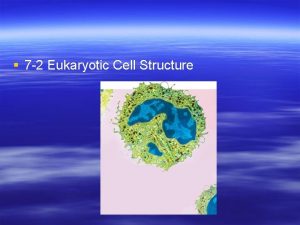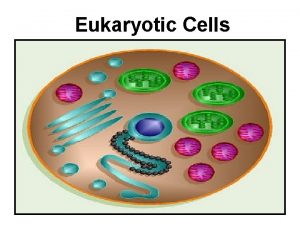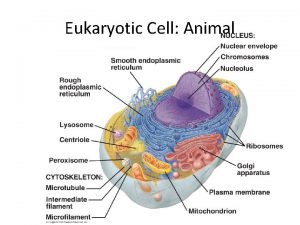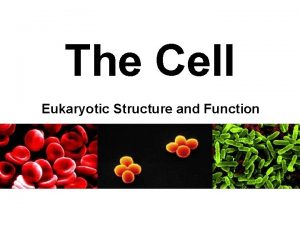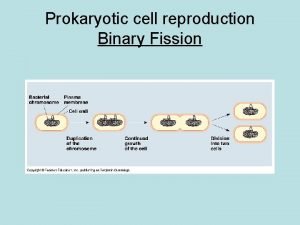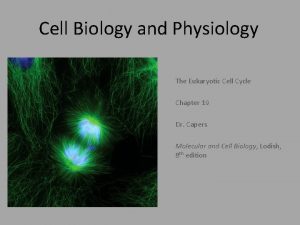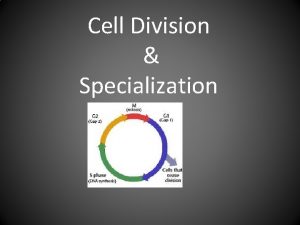Eukaryotic Cell Cycle The Eukaryotic Cell Cycle The























- Slides: 23

Eukaryotic Cell Cycle

The Eukaryotic Cell Cycle The cell cycle is when a cell grows, prepares for division, and divides into two new daughter cells.

Three parts to the cell cycle: 1. Interphase 2. Mitosis 3. Cytokinesis

Interphase is divided into 3 parts: G 1 phase: Cells are growing. They get larger and make organelles S phase: Synthesis. The cell replicated its DNA. G 2 phase: The cell prepares for cell division. Any needed organelles are made (centrioles).

MITOSIS Mitosis : Division of the nucleus

PROPHASE Chromosomes become visible. The spindle starts to form between the centrioles. The nuclear membrane dissolves.

METAPHASE The centromeres of the duplicated chromosomes line up across the middle of the cell.

ANAPHASE The duplicated chromosomes begin to separate. They pulled apart by the spindle fibers and move to opposite sides of the cell.

TELOPHASE The chromosomes become less distinct and the new nuclei begin to form.









Cytokinesis Final division of cell membrane and cytoplasm.

Cytokinesis Plant cells form a CELL PLATE between two new cells. This will become part of the cell wall.

Cytokinesis Animal cells form a cell membrane that pinches in to form two new cells.


The cell cycle is controlled by regulatory proteins both inside and outside the cell. Growth factors stimulate growth, embryonic development, and wound healing. Apoptosis is programmed cell death. Some diseases are caused by too much cell growth, such as Parkinson’s disease and AIDS.

Cancer cells do not respond to the signals that regulate growth. The cells grow out of control and can cause a mass called a tumor. Benign: does not spread Malignant: invade and destroy healthy tissue
 Prokaryotic cell vs eukaryotic cell
Prokaryotic cell vs eukaryotic cell Prokaryotic
Prokaryotic Prokaryotic cell and eukaryotic cell
Prokaryotic cell and eukaryotic cell Carbohydrate side chain
Carbohydrate side chain What is eukarya
What is eukarya Prokaryotic or eukaryotic
Prokaryotic or eukaryotic Euglena prokaryotic or eukaryotic
Euglena prokaryotic or eukaryotic Eukaryotic cell structure
Eukaryotic cell structure Section 7-2 eukaryotic cell structure
Section 7-2 eukaryotic cell structure Biology chapter 7 cell structure and function
Biology chapter 7 cell structure and function Typical eukaryotic cell
Typical eukaryotic cell 7-2 eukaryotic cell structure
7-2 eukaryotic cell structure 7-2 eukaryotic cell structure
7-2 eukaryotic cell structure Eukaryotic cell organisation
Eukaryotic cell organisation Differences between prokaryotic and eukaryotic
Differences between prokaryotic and eukaryotic Mitochordrion
Mitochordrion Eukaryotic cell diagram
Eukaryotic cell diagram Dialysis membrane
Dialysis membrane Eukaryotic cell
Eukaryotic cell Are cell walls prokaryotic or eukaryotic
Are cell walls prokaryotic or eukaryotic Eukaryotic cell questions
Eukaryotic cell questions Eukaryotic cell with labels
Eukaryotic cell with labels Difference between prokaryotic and eukaryotic
Difference between prokaryotic and eukaryotic Characteristics of algae
Characteristics of algae





